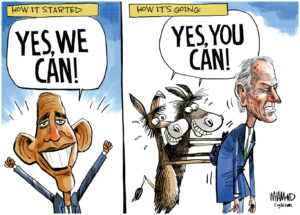Still Living With Jack Bauer in a Terrified New American World
Once upon a time, if a character on TV tortured someone, it was a sure sign that he was a bad guy. Now, the torturers are the all-American heroes. From "24" to "Zero Dark Thirty," it’s been the good guys who wielded the pliers and the waterboards. We’re not only living in a post-9/11 world, we’re stuck with Jack Bauer in the 25th hour. 1
2
3
1
2
3
Once upon a time, if a character on TV or in a movie tortured someone, it was a sure sign that he was a bad guy. Now, the torturers are the all-American heroes. From 24 to Zero Dark Thirty, it’s been the good guys who wielded the pliers and the waterboards. We’re not only living in a post-9/11 world, we’re stuck with Jack Bauer in the 25th hour.
In 2002, Cofer Black, the former Director of the CIA’s Counterterrorism Center, told a Senate committee, “All I want to say is that there was ‘before’ 9/11 and ‘after’ 9/11. After 9/11 the gloves come off.” He wanted them to understand that Americans now live in a changed world, where, from the point of view of the national security state, anything goes. It was, as he and various top officials in the Bush administration saw it, a dangerous place in which terrorists might be lurking in any airport security line and who knew where else.
Dark-skinned foreigners promoting disturbing religions were driven to destroy us because, as President George W. Bush said more than once, “they hate our freedoms.” It was “them or us.” In such a frightening new world, we were assured, our survival depended in part on brave men and women willing to break precedent and torture some of our enemies for information that would save civilization itself. As part of a new American creed, we learned that torture was the price of security.
These were the ruling fantasies of the era, onscreen and off. But didn’t that sorry phase of our national life end when Bush and his vice president Dick Cheney departed? Wasn’t it over once Barack Obama entered the Oval Office and issued an executive order closing the CIA black sites that the Bush administration had set up across the planet, forbidding what had euphemistically come to be called “enhanced interrogation techniques?” As it happens, no. Though it’s seldom commented upon, the infrastructure for, the capacity for, and the personnel to staff a system of institutionalized state torture remain in place, ready to bloom like a desert plant in a rain shower the next time fear shakes the United States.
There are several important reasons why the resurgence of torture remains a possibility in post-Bush America:
* Torture did not necessarily end when Obama took office.
* We have never had a full accounting of all the torture programs in the “war on terror.”
* Not one of the senior government officials responsible for activities that amounted to war crimes has been held accountable, nor were any of the actual torturers ever brought to court.
Torture Did Not Necessarily End When Obama Took Office
The president’s executive order directed the CIA to close its detention centers “as expeditiously as possible” and not to open any new ones. No such orders were given, however, to the Joint Special Operations Command (JSOC), a clandestine force composed of elite fighters from several branches of the U.S. armed forces. JSOC had run its own secret detention centers in Iraq. At Camp Nama, interrogations took place in the ominously named “Black Room.” According to the New York Times, the camp’s chilling motto was “no blood, no foul.” JSOC is presently deployed on several continents, including Africa, where gathering “intelligence” forms an important part of its duties.
The president’s executive order still permits “rendition” — the transfer of a terror suspect to another country for interrogation, which in the Bush years meant to the prisons of regimes notorious for torture. It does, however, impose some constraints on the practice. Such “transfers” must be approved by a special committee composed of the director of national intelligence, the secretary of defense, the secretary of state, the secretary of homeland security, the director of the Central Intelligence Agency, and the chairman of the Joint Chiefs of Staff. It is to be chaired by the attorney general. The committee must not “transfer… individuals to other nations to face torture or otherwise for the purpose, or with the effect, of undermining or circumventing the commitments or obligations of the United States to ensure the humane treatment of individuals in its custody or control.”
This last constraint, however, has been in place at least since 1994, when the Senate ratified the U.N. Convention against Torture and Other Cruel, Inhuman, and Degrading Treatment. That did not prevent the rendition of people like Maher Arar, an innocent Canadian citizen sent by the United States to Syria, where he endured 10 months of torture in an underground cell. Nor did it save Binyam Mohammed, whose Moroccan jailers sliced his chest and penis with a scalpel — once a month for 18 months, according to British human rights lawyer Andy Worthington.
Nor has the CIA itself been prepared to end all its torture programs. In his confirmation hearings, Obama’s first CIA director Leon Panetta told members of Congress that “if the approved techniques were ‘not sufficient’ to get a detainee to divulge details he was suspected of knowing about an imminent attack, he would ask for ‘additional authority’ to use other methods.” It is, however, unlikely that such “other methods” could be brought to bear on the spur of the moment. To do so, you need an infrastructure and trained personnel. You need to be ready, with skills honed.
Dig, Root, GrowThis year, we’re all on shaky ground, and the need for independent journalism has never been greater. A new administration is openly attacking free press — and the stakes couldn’t be higher.
Your support is more than a donation. It helps us dig deeper into hidden truths, root out corruption and misinformation, and grow an informed, resilient community.
Independent journalism like Truthdig doesn't just report the news — it helps cultivate a better future.
Your tax-deductible gift powers fearless reporting and uncompromising analysis. Together, we can protect democracy and expose the stories that must be told.
This spring, stand with our journalists.
Dig. Root. Grow. Cultivate a better future.
Donate today.








You need to be a supporter to comment.
There are currently no responses to this article.
Be the first to respond.